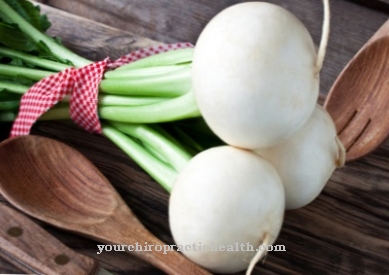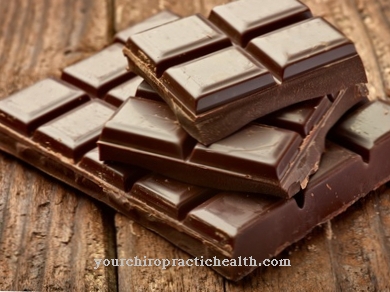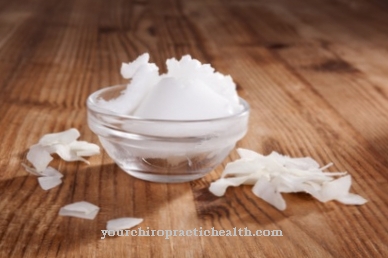The May beet is one of the old vegetables that were rarely present in German kitchens for a long time. However, the comeback of white turnips has long since begun. Rightly so, because the turnip can score points with valuable ingredients and provides a new flavor in many dishes.
What you should know about the turnip

The turnip is also called Navette or - due to their small size of about five centimeters in diameter - also as May turnips known. As a turnip, the turnip is one of the root vegetables and belongs to the cruciferous family. A close relative of the May turnip is the Teltower turnip.
In ancient times, the turnip was still cultivated very frequently, but over time it was gradually replaced by the potato. The turnip is also rarely found in cookbooks today. Before the triumphant advance of the potato, the turnip was considered a staple food in Europe. Since the trend to increasingly use old vegetables again in German cuisine, the turnip has become increasingly popular again.
As the name suggests, May beets from outdoor cultivation are harvested in May, sometimes well into June. This makes it one of the first vegetables of the year that can be obtained fresh from regional cultivation. The turnip only needs about six to eight weeks to grow from seed to harvest. Therefore, May beets, also in the open air, are often sown again in late summer and harvested in autumn. They do best on sandy soil. Alternatively, beets from greenhouses or from foreign cultivation are also available. The small size of the turnip is in some cases due to the cultivation.
Many farms plant the turnips so close together that they cannot be larger than five centimeters to achieve the highest possible yield. May turns that are too large can also become woody and therefore inedible. So the smallest possible May turnips are best suited for raw consumption anyway.
The tuber of common May beet varieties is continuously white from the skin to the inside. The taste of the turnip can be compared to that of radishes, but the turnip tastes less spicy. The relationship with the radish can also be recognized by the taste of the turnip, and the taste is reminiscent of horseradish and kohlrabi.
Importance to health
Root vegetables, of which the turnip belongs to the family, generally has a good reputation - they should be low in calories and full of vital nutrients.
The turnip not only consists of 90 percent water and is therefore very low in calories, but it also contains numerous vitamins and minerals. It supplies the body with plenty of vitamin B for strong nerves, zinc for the immune system, iron for blood formation and folic acid. The leaves, which are also edible, contain vitamin C and carotene. The peel of the small turnip also contains mustard oil glycosides, which give the turnip its pungent taste. In the raw state, the content of the respective minerals is of course higher than in the cooked state. Therefore, the turnip should be eaten raw as often as possible so that the body can benefit from all the health benefits.
Ingredients & nutritional values
100 grams of May beets contain on average:
- 26kcal (109kJ)
- 1g protein
- 4.7g carbohydrates
- 0.2g fat
- 3.5g fiber
Intolerances & allergies
The beet as a cruciferous plant can potentially trigger allergies. If you know that you have already had an allergic reaction to another vegetable from the cruciferous family, you should only carefully approach the turnip. Possible symptoms of intolerance are abdominal pain or headache after consumption as well as general digestive problems.
The fresher the turnip is when consumed, the better it is usually tolerated by potential allergy sufferers. Cooking can also help against allergic reactions.
Shopping & kitchen tips
Outside the main season in May and June, May beets are usually only available in a few, well-stocked vegetable departments and then do not always come from the region.
When buying, the beets should always be smooth and firm, evenly shaped and clean. Most of the May beets in the supermarket or at the weekly market come directly from the region. Too long transport routes would make the cultivation of the rather low-yielding turnip uneconomical.
May beets can be kept for about a week after they have been bought, and the beets stay crisp for up to two weeks fresh from the field. When storing, care should be taken to keep the temperature below eight degrees Celsius and high humidity. The white, small beets keep best in the refrigerator.
Since the green of the beet wilts the fastest, it should be removed before storage and, ideally, used immediately in the kitchen. Contrary to intuition, the May turnips should not be washed before storage. The outer layer of cells is damaged, which quickly wrinkles the beet, even in the refrigerator.
Preparation tips
As an old vegetable variety, the turnip has not played a major role in cookbooks for a long time. In the meantime, however, enough recipes for cooking with old vegetables such as turnip can be discovered again.
The turnip can be eaten raw or cooked. Before doing this, however, it should always be peeled or alternatively washed very thoroughly. Since the peel has a very firm consistency, most people prefer the peeled variant, at least when eaten raw. When cooking, however, the shell becomes soft.
The turnip is particularly popular raw in salads. Steamed or steamed, they are ideal as a vegetable side dish for hearty dishes. May turnips develop their aroma best when they are tossed in a little butter or served with a light sauce. The turnip takes about five to ten minutes to cook. If you can't find appealing recipes with the turnip as an ingredient, you can also use other beet recipes, for example with the turnip, and simply modify them with the appropriate amount of turnips.
The green of the turnip can also be used well in the kitchen. In recipes with spinach or Swiss chard, the beet green can easily replace these types of vegetables.














.jpg)













